
— Kris Ashton
While the MG ZS small SUV made an indelible impact on the Australian car market, its mid-sized sibling, the MG HS, proved more of an also-ran, selling in respectable but far from segment-altering numbers. When the MG HS plug-in hybrid debuted in 2021, it claimed the title of Australia’s cheapest PHEV SUV ($46,990 drive away) and now it returns to market as the all-new MG HS Super Hybrid, with more than double the electric range and fresher styling. But it also arrives with a heftier price tag and faces a frenzy of competitors its predecessor didn’t.
The plug-in hybrid (PHEV) version of the MG HS follows the usual MG specification structure: Excite and Essence. Throughout July 2025, MG offered introductory drive-away pricing of $50,990 and $54,990 respectively, but when regular pricing resumes customers can expect to pay $52,990 (Excite) and $55,990 (Essence) drive away.
No segment is more congested than mid-sized SUVs, and even when you narrow it down to PHEVs, the Super Hybrid comes up against the Kia Sorento GT-Line PHEV ($84,660 plus on-road costs), Mitsubishi Outlander PHEV ($57,290), Leapmotor C10 ($47,888) and the BYD Sealion 6 ($42,990), to name just a handful.
There’s little to criticise about the MG HS Super Hybrid’s cabin layout and aesthetics. The styling on the Excite (our test vehicle) is inoffensive, mainly matt and gloss black finishes with touches of chrome, plus pastel orange stitching on the seats, dash and console. A single panoramic screen encompasses both instrument cluster and infotainment system and lends a sense of cohesion to the dash. Nothing feels scratchy or hard for the most part, although there are exceptions, which we’ll get to.
Up front are two USB-A ports (one for connection and one for charging) and two cup holders. Under the centre armrest lid, one finds a small storage box and non-slip matting for a smartphone, which doubles as a wireless charger in the Essence. The seats are comfortable and well-shaped and it’s easy to find a natural driving position. In sum, the MG HS cabin feels well-organised and basic, but not cheap.
Switch to the rear and it’s much the same story. Leg, foot, and head room are abundant and, while the back seats aren’t exactly the last word in comfort – they’re a tad flat – the padding is solid enough. Rear passengers get two USB-A ports, two air conditioning vents, two speakers, and two armrest cupholders (of the same dubious quality as those found in the MG ZS ).
The boot, while far from huge, is median for the mid-sized SUV segment. The electric motor limits space under the floor, however, so a tyre repair kit is your only recourse if you get a flat.
Given the Excite model sells for north of $50,000, the standard inclusions aren’t as lavish as the price might suggest. They amount to 19-inch alloy wheels, keyless entry and push button start, a 12.3-inch virtual driver display, 12.3-inch infotainment screen with wireless Apple CarPlay/Android Auto and digital radio, a six-speaker sound system, reversing camera, satellite navigation, a polyurethane ‘leather look’ steering wheel, and a leather gear shifter. The MG spec sheet features a long list of other ‘inclusions’ but most – such as air conditioning, Bluetooth, and electric windows – are more like expectations in 2025.
The $3000 premium for the Essence entitles the buyer to a panoramic sunroof, sunglasses box (yes, really), dual-zone climate control, folding door mirrors with memory function, front parking sensors, PVC seat upholstery, memory function for the driver’s seat, electric adjustment for the passenger’s seat, heated seats up front, a powered tailgate with kick function, two extra speakers, a 360-degree camera, and wireless phone charging.
The very pretty Artic Blue paint on our press vehicle costs extra an $700 – as does any colour other than white.
The MG HS Super Hybrid is covered by MG’s seven-year/unlimited kilometre warranty for both petrol engine and electric motor/battery, with an option to extend to 10 years/unlimited kilometres provided you meet MG’s service conditions.
Petrol variants of the MG HS achieved a five-star ANCAP safety rating in August 2024, but the hybrid versions have not been separately tested. The Super Hybrid sure doesn’t lack safety equipment, with seven airbags, lane change assistance, lane keeping and emergency lane keeping assistance, lane departure warning, forward collision warning, blind spot detection, driver attention monitoring, rear cross-traffic braking, and loads more.
The MG Super Hybrid’s drivetrain combines a 1.5-litre turbo petrol four-cylinder engine and an electric motor that draws power from a 24.7kWh battery pack. The engine puts out 105kW/230Nm, while the motor is good for 155kW and 340Nm. MG lists combined maximum system output at 220kW and 350Nm.
A dedicated hybrid transmission manages it all and drive is through the front wheels. The MG HS Super Hybrid can travel up to 120km in pure EV mode (WLTP), with an overall combined fuel consumption claim of just 0.7L/100km.
There is no DC fast-charging option, however, with either a 10-amp slow charger (7.3 hours) or 7kW charging option (four hours with an AC wall charger) available to replenish the battery. The turbo engine requires minimum 95 RON unleaded petrol.
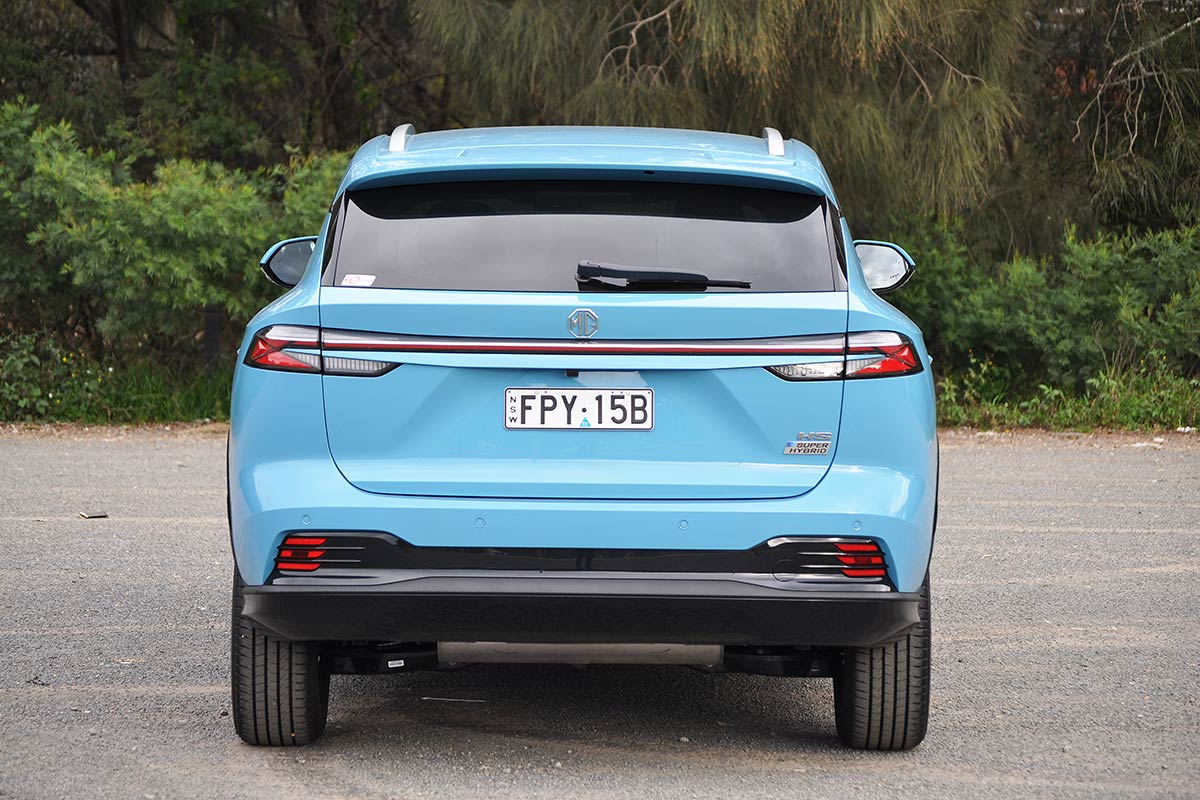
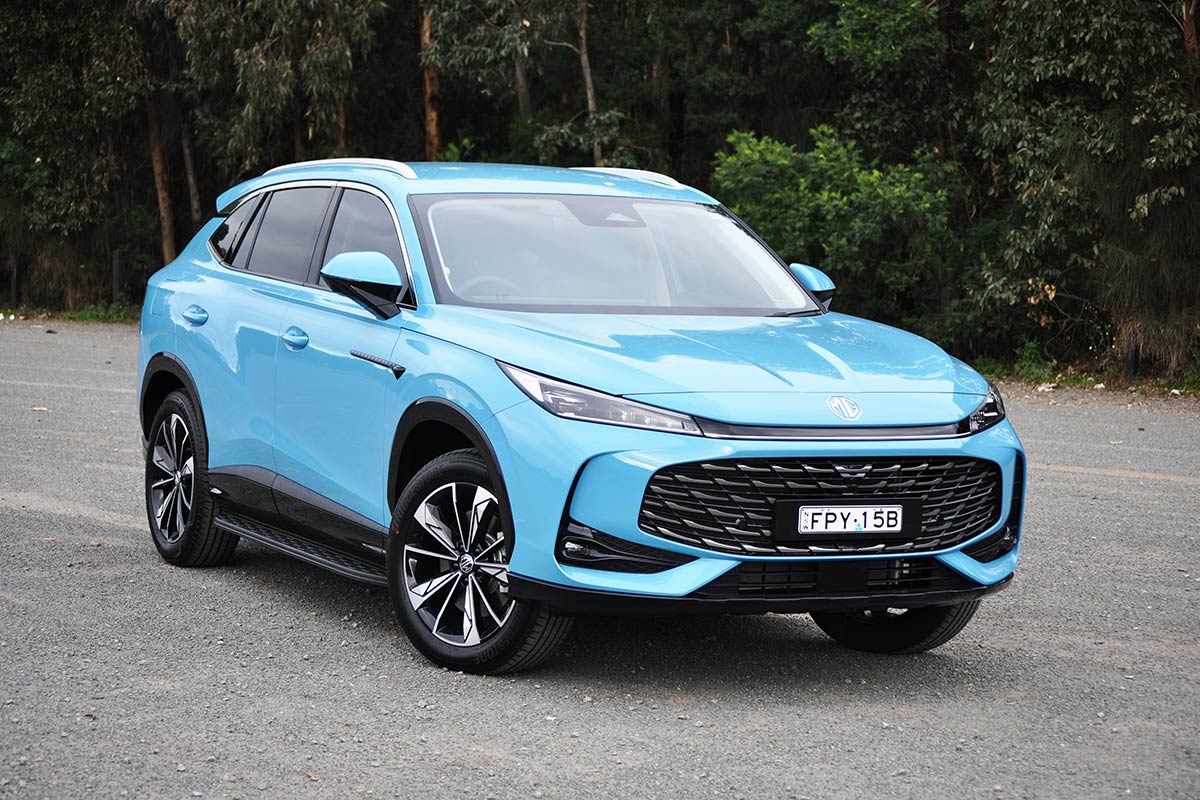
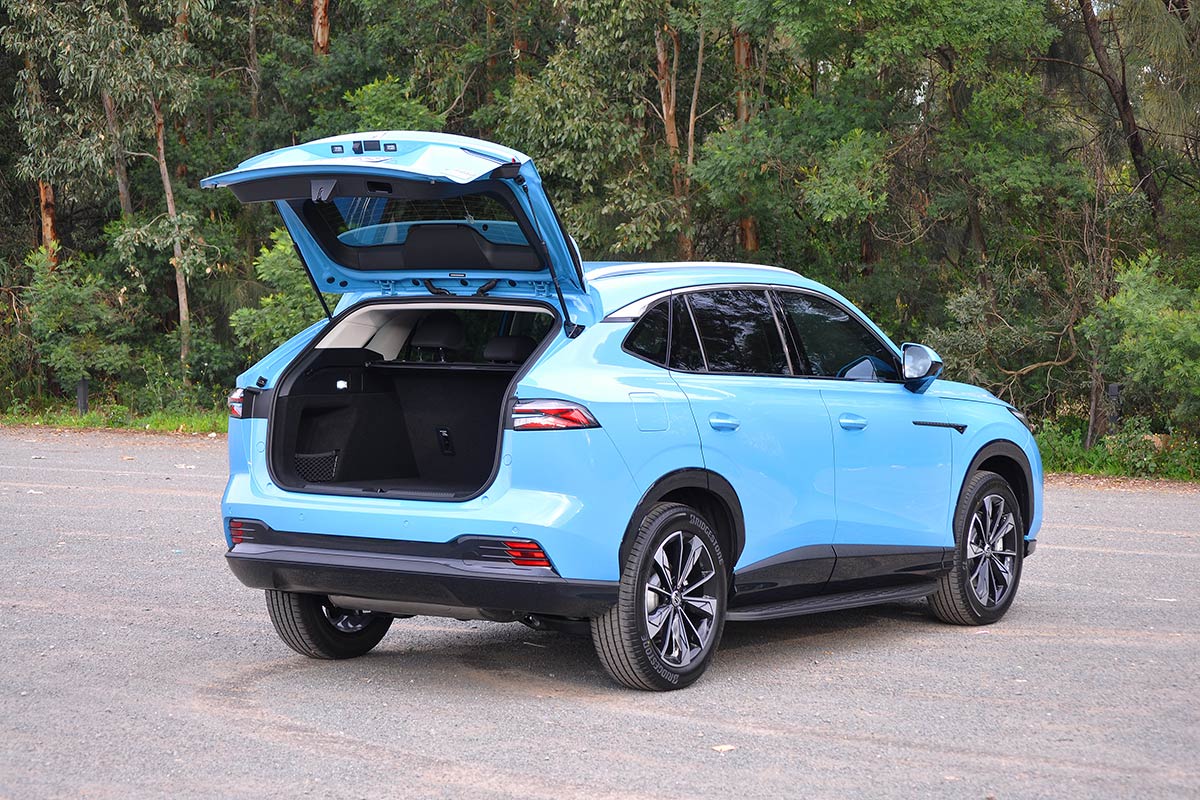
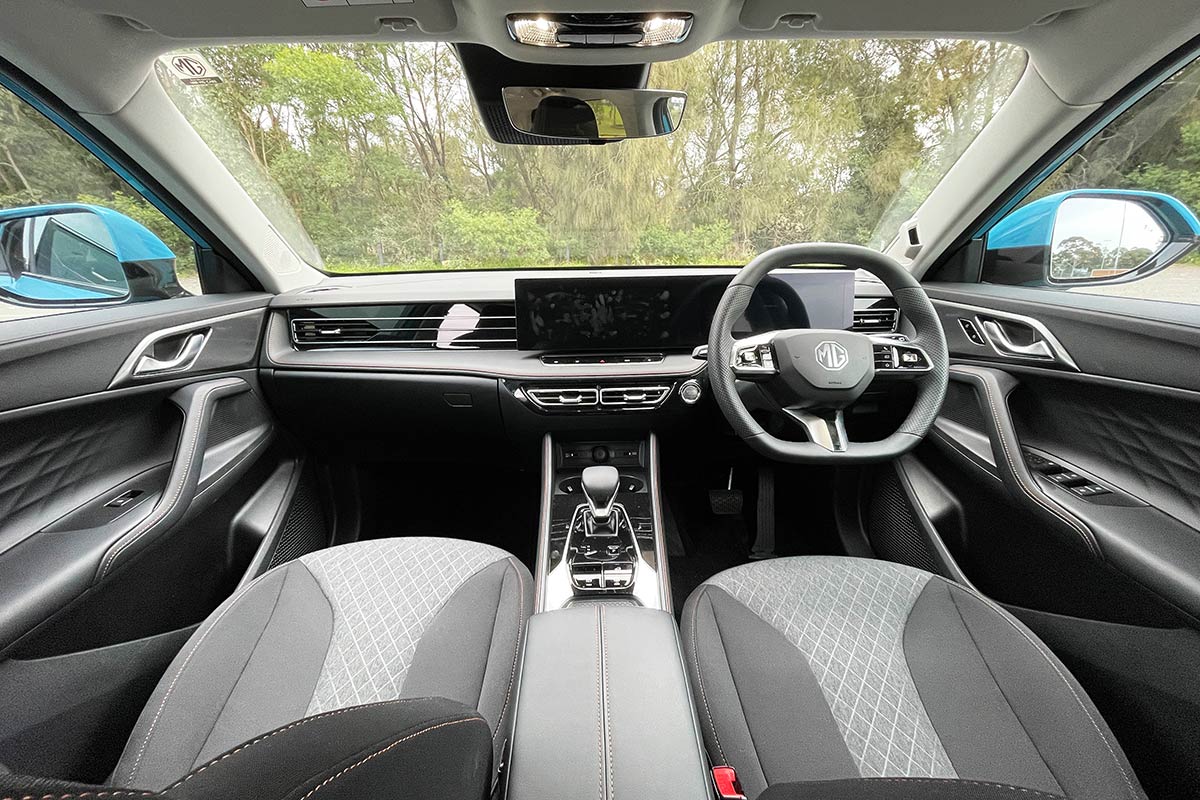
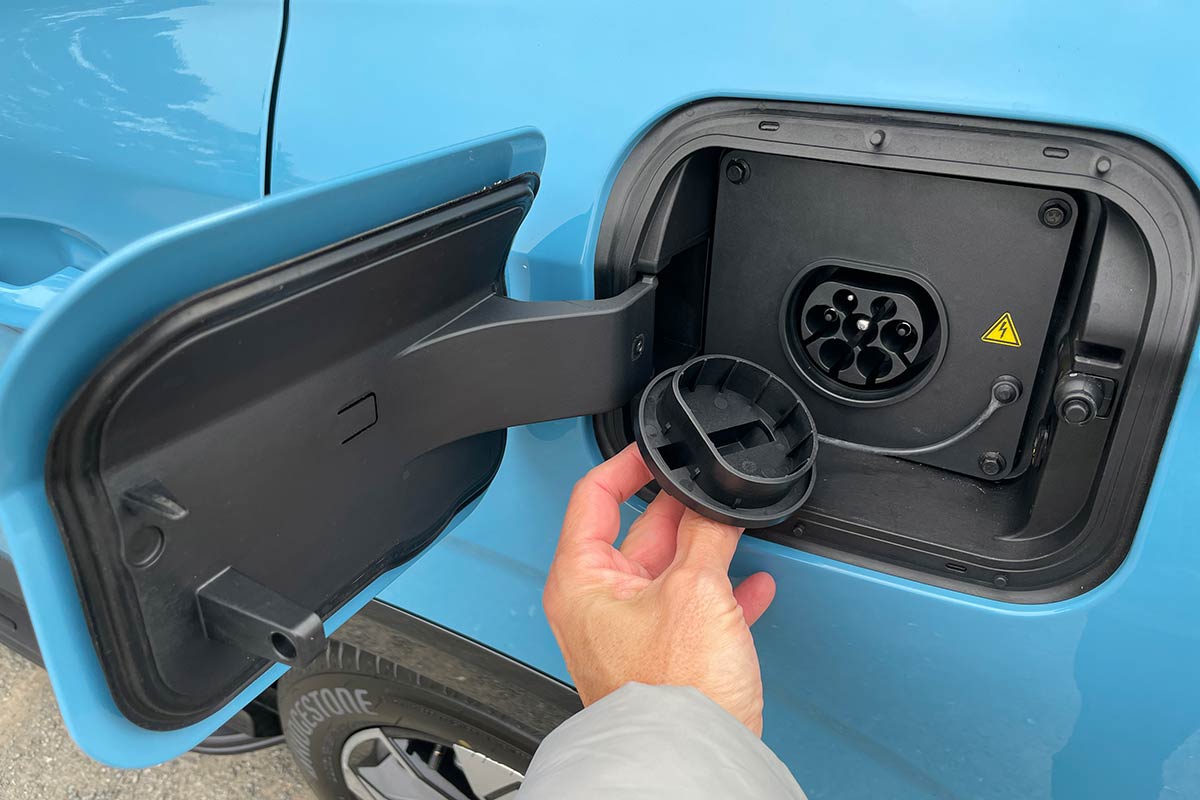
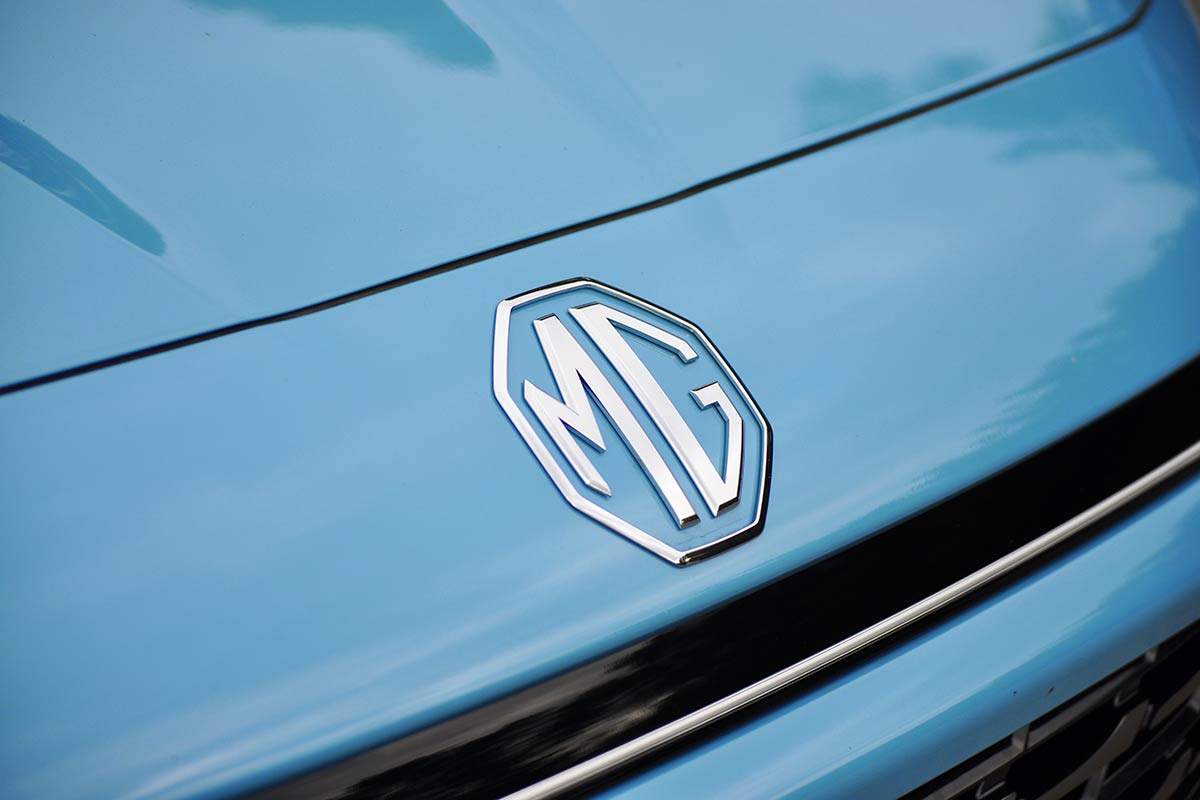
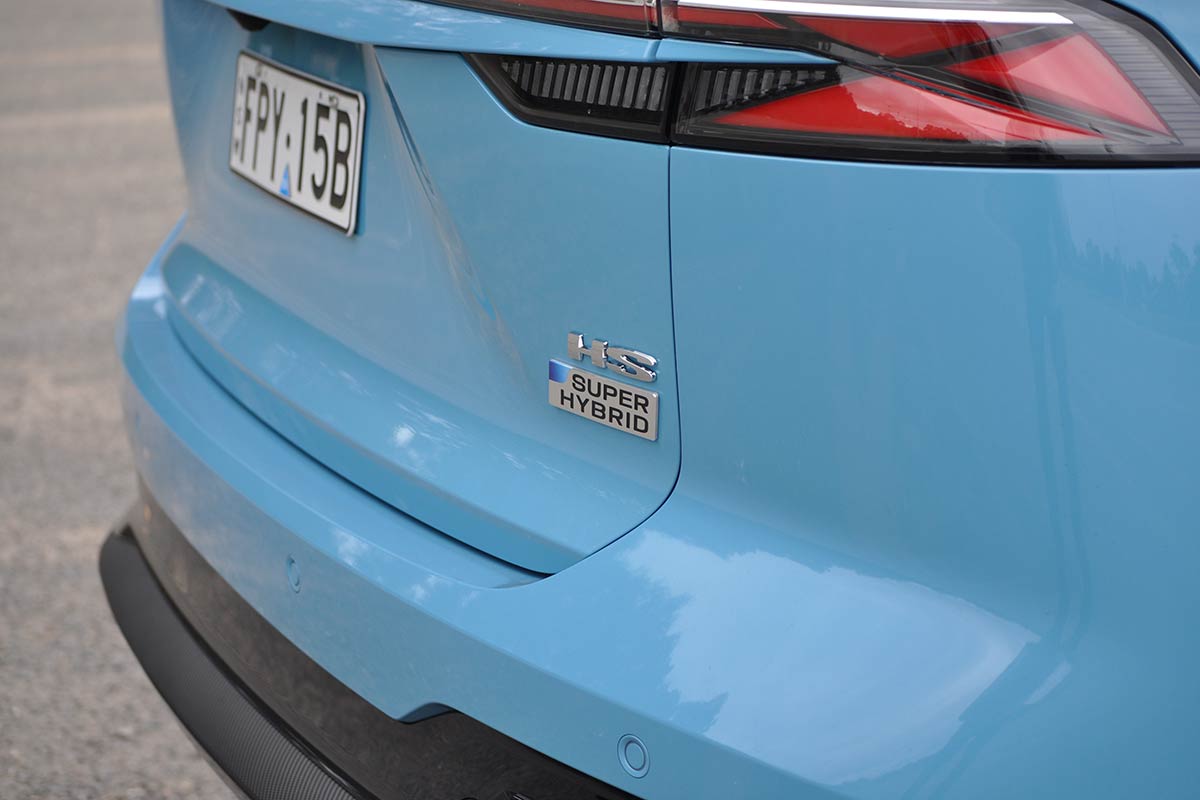
Laying hands on the polyurethane steering wheel (which isn’t going to trick anyone into believing it’s leather) gives the first indication MG has had to find cost savings here and there to offset all the electrics under the floor. Coarse fabric on the Excite’s seats and a rough edge on the indicator stalk (plus the rather cheap click when it’s engaged) provide further evidence.
That said, there’s an agreeable simplicity to the digital gear shifter, which has a separate button for park and an automatically engaging parking brake, and there are three digital instrument cluster themes to choose from, each one prioritising different information. The only analogue buttons are for front and rear demisters, on/off for the air conditioning controls (which pop up or withdraw on the central screen), and a home button for the infotainment screen.
Everything else is given over to digital operation via the main screen, with all the inherent and oft-discussed drawbacks that entails. The interface does have some clever and convenient functions, such as an option to ‘swipe’ between radio and Bluetooth connection, but the screen’s prodigious width means the driver is sometimes at a stretch to reach the far left-hand side.
Then there are the volume controls, or rather their absence. One set (unmarked) is available via the steering wheel’s right analogue stick, but if the passenger wants to turn the volume up or down, the options are A. ask the driver to do it or B. swipe left from home screen, go into settings, then move volume-slider under the media. If there’s another way for the passenger to adjust the volume, we were unable to locate it.
More technological irks await once you get rolling.
When the reversing camera displays full screen (and sometimes it takes several seconds to appear at all) it doesn’t account for the aspect ratio, so the image is squashed and judging distance can be guesswork.
If you don’t want to listen to the sanity-threatening overspeed chime it takes two button presses to turn it off and of course it comes back on every time you switch off the car. There’s not even an option to program this sequence into a favourite button on the steering wheel as you can with some other brands.
Get past all the tech gremlins, however, and the drive experience improves. Much of the time the MG HS Super Hybrid performs like an EV, so pick-up from a standing start is good and responsiveness during rolling acceleration excellent. Don’t let those 220kW/350Nm figures deceive you, though – the Super Hybrid doesn’t drive like a performance vehicle. When you accelerate hard, the system’s mid-range power limitations become apparent.
Handling is competent for an SUV of this size (1850kg). Comfort, Normal and Sport modes adjust steering weight and responsiveness. Macpherson struts and multi-link suspension ensure very little sway in corners and ride quality over larger bumps is commendable, although the Super Hybrid does tend to get a bit fidgety over smaller imperfections.
Dynamics and performance, then, are generally satisfying, which leads to the question of fuel consumption. A 120km EV-only range puts the MG HS Super Hybrid towards the top of the PHEV pack and would likely cover at least two days of an average commute before a recharge is needed. While the official fuel consumption figure is a mere 0.7L/100km, if you drive the Super Hybrid around in ‘normal’ mode you’ll see 6.0L/100km (as we did over 230km of suburban driving) – slightly thirstier than the official figure for the MG HS Hybrid+. So, as with all plug-in hybrids, if you don’t have the discipline to charge it up each evening the MG Super Hybrid will just be a more expensive version of a regular hybrid.
Many of MG’s newer cars have made a compelling case for purchase, but the MG HS Super Hybrid doesn’t quite convince. In many respects it’s a good SUV, but ‘good’ isn’t sufficient in a segment where consumers are spoiled for choice. Several competitors undercut the MG HS on price, and a vehicle that retails north of $50k should not have as many ‘budget’ blemishes as the Excite does. Unless you value electric range above all else in your mid-sized SUV, there are likely better options.